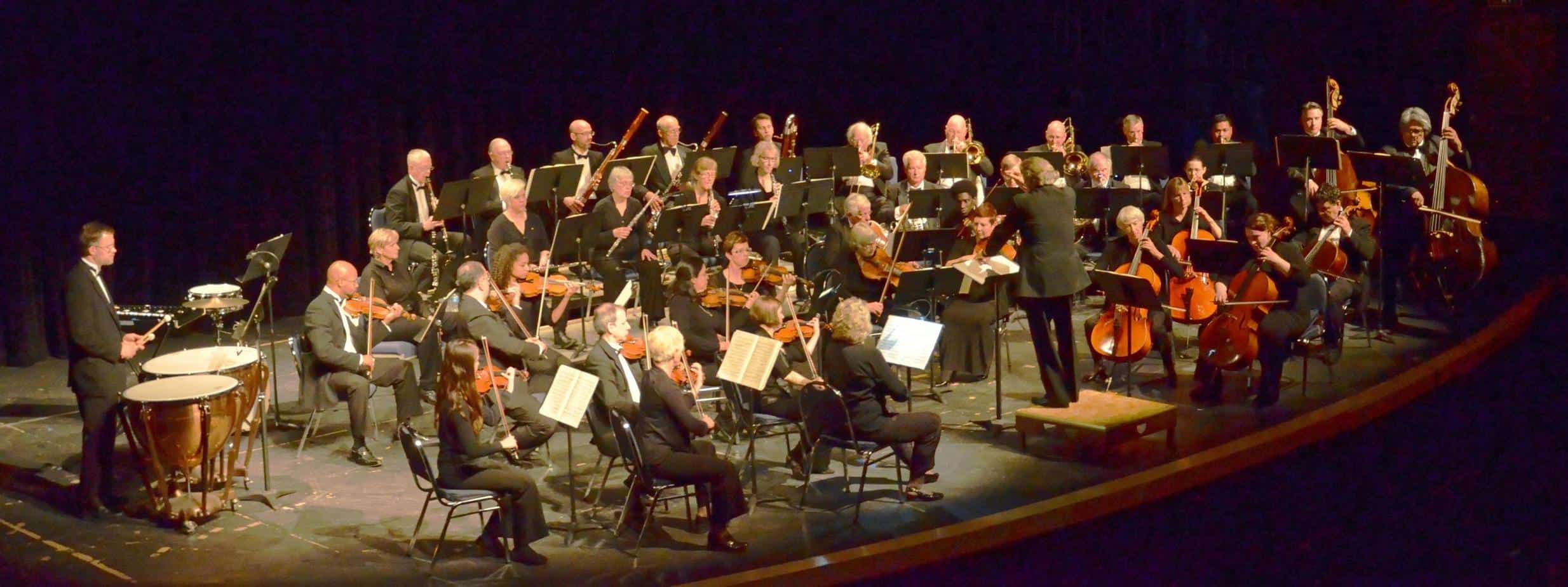The Verde Valley Sinfonietta celebrates the many emotions of love with its popular Love is in the Music concert to be performed at 2:30 p.m. on Valentine’s Day, Sunday, Feb. 14, at the Sedona Performing Arts Center, located at 995 Upper Red Rock Loop Road in Sedona.
For this concert, the Sinfonietta musicians will perform a comprehensive program of music expressing the wide range of love, beginning with W.A. Mozart’s “Overture” to “Cosi fan tutte, K. 588.” The English translation of the piece is “Thus Do They All [Women]” or, in the case of this concert, more aptly “The School for Lovers.” The overture, to be performed as a stand-alone in Sunday’s concert, was composed to preface the famous comic opera that showcases the complexities of women, or at least men’s understanding of them.
The next piece, by composer Pietro Mascagni, is the Intermezzo from “Cavalleria Rusticana.” Translated as Rustic Chivalry, it is another opera with a strong and powerful theme of love, betrayal and jealousy. The opera’s symphonic intermezzo might seem familiar as it has been incorporated into the sound tracks of “Raging Bull,” the finale of “The Godfather Part III” and, most recently, as the music in the trailer for “Mad Max: Fury Road.”
The orchestra moves to a tragic love story composed by Aram Khachaturian titled Adagio from “Spartacus: Ballet Suite No. 2.” Composed in 1954, this work follows the exploits of Spartacus and his initially successful rescue of his wife Phrygia from the Roman consul Marcus Crassus. Eventually, Crassus’ forces discover Spartacus and kill him. Spartacus’s closest followers recover his body while Phrygia mourns her loss. This piece expresses the bliss of love, found again with deep mourning for love’s loss.
“Feuerfest Polka Francaise, Op. 269,” by Josef Strauss, takes us to France with a polka that was first played at a company party of Viennese entrepreneur Franz Wertheim. The entire staff of the company had gathered to celebrate the completion of the 20,000th iron safe, a leading product that was sold throughout the Danube monarchy and was highly prized abroad. Reports on the celebration in the garden rooms documented that the occasion was handled “most democratically.” Directors and workers were said to have equal rights and the elegant finery of the ladies of the aristocracy was appreciated as much as the simple clothes of the clerks. When it came to dancing this piece, all attendees at the event were equal. The title of the dedication was obvious because the company’s claim to fame was that its safes were fireproof, perhaps suggestive of the fiery power of love and passion.
The Sinfonietta showcases both Johann Strauss Jr. and his father in the February concert. As a child, Strauss Jr. grew up surrounded by music gained though his talented family who were well versed in a wide range of repertory, including dances and marches for the enthusiastic Strauss family orchestra, as well as overtures and concert pieces of the traditional Classical oeuvre. Quite prolific, he wrote 162 waltzes of which the “Beautiful Danube Waltz, Op. 314,” is his most well known and recognizable. The composition never fails to make an impression on those who experience its captivating rhythms. The work’s striking inventiveness and masterful orchestral technique capture the Viennese sentiment so well that the Blue Danube has become an unofficial Austrian national anthem.
Johann Strauss Sr.’s “Radetsky March, Op. 228,” composed in 1848, was dedicated to Field Marshal Joseph Radetzky von Radetz and soon became quite popular among regimented marching soldiers for its joyful notes. The over-arching tone of the piece is more celebratory than martial. Strauss was commissioned to write the piece to commemorate Radetzky’s victory at the Battle of Custoza. When it was first played in front of Austrian officers, they spontaneously clapped and stamped their feet when they heard the chorus. This tradition, with quiet rhythmic clapping on the first iteration of the melody, followed by thunderous clapping on the second, is kept alive today by audience members who know the custom when the march is played in classical music venues in Vienna.
Franz von Suppé’s most famous piece, the “Poet and Peasant Overture,” will close the concert. This piece was part of some theater music written for the comedy Dichter und Bauer by Karl Elmar. The theater required opening music for its premiere performance in Vienna in August 1846. Elmar asked the young conductor to write a composition and he accepted the assignment despite the very short timeframe available. Music publisher Josef Aibl was present at the premiere performance and was so overwhelmed by this music that he immediately bought the publishing rights for the pitiful price of eight guilders. Being short of money, Suppé accepted the offer, although he bitterly regretted this rash decision for the rest of his life because the publisher went on to print numerous editions and sold no less than 52 different arrangements.
The composition deals with the lack of understanding between a guardian and his pupil who does not want to abandon her lover, who is poor. Although he is a peasant, the young man is also an outstanding poet who wins a literary duel in the city. This, of course, makes his prestige even bigger with the girl. This piece ends the Love is in the Music concert on a high note with the sentiment that love overcomes all. Interestingly, the title of the piece also references the relationship of the poet who wrote the comedy to the composer who was essentially a peasant when he wrote the piece.
General admission tickets are $30 at the door for adults and $25 if purchased online in advance at the VVSinfonietta.org website. Students age 18 and under are free of charge when accompanied by an adult. Tickets are available at the door the day of the concert and online through the Sinfonietta website. Visit the website for additional information.



















